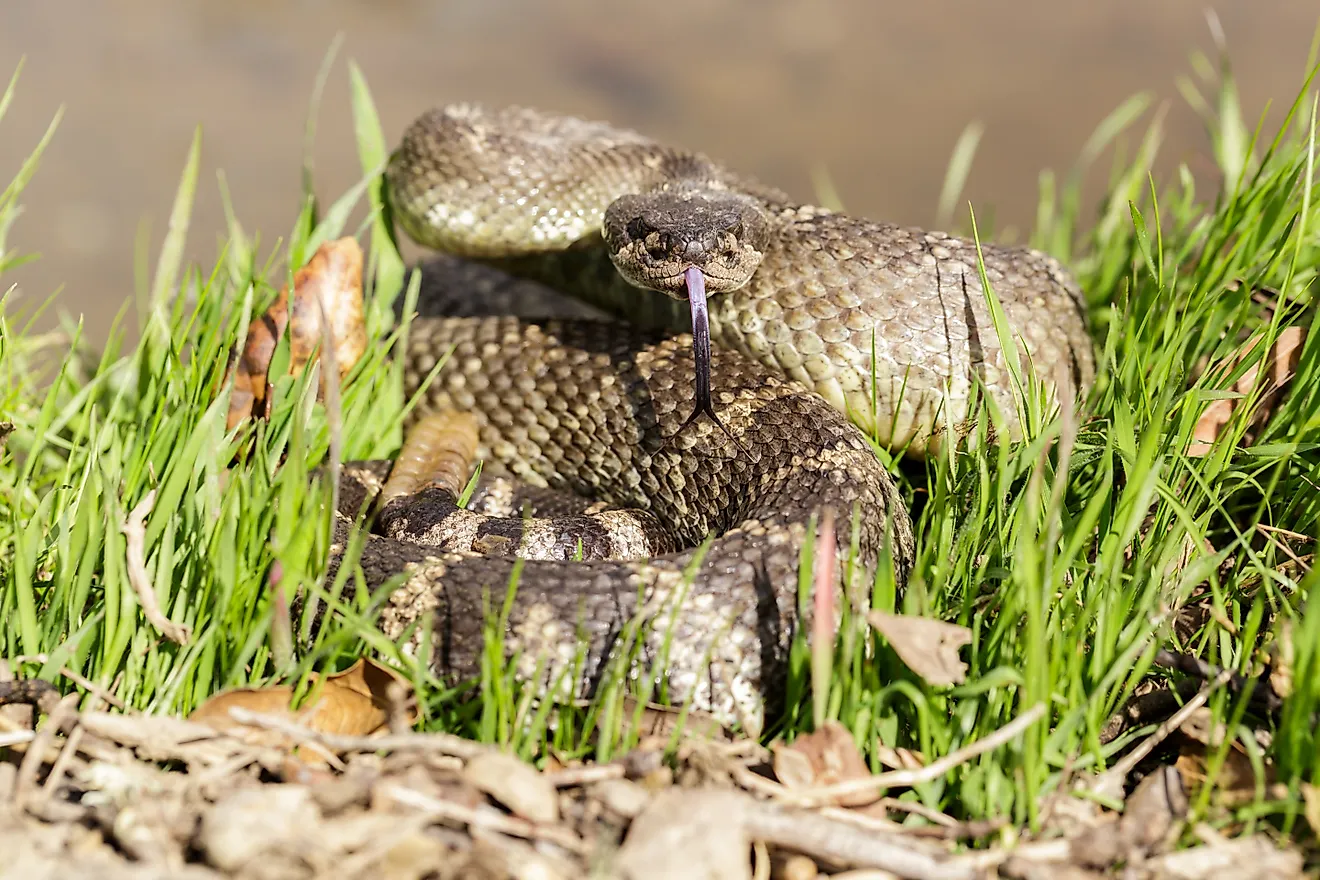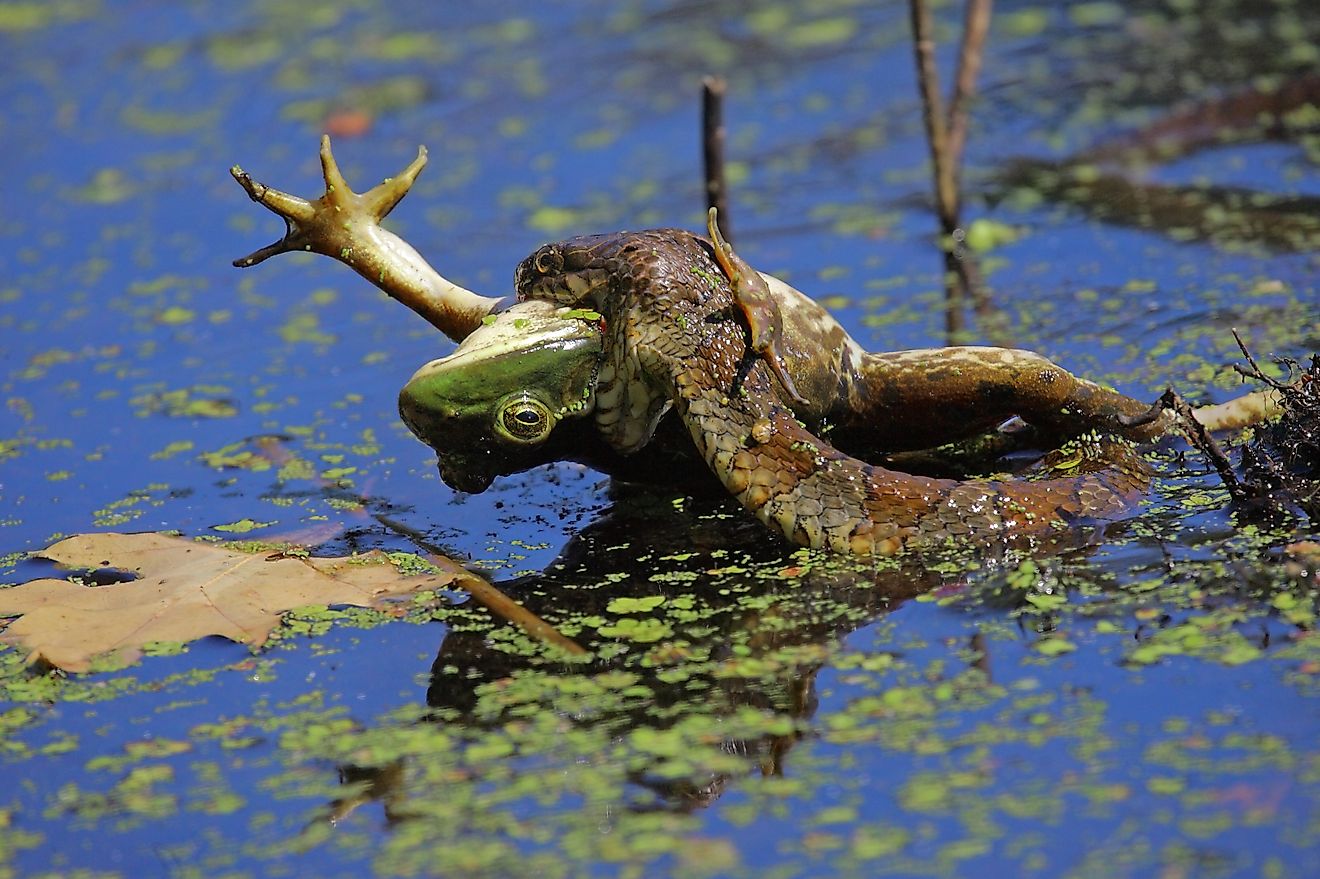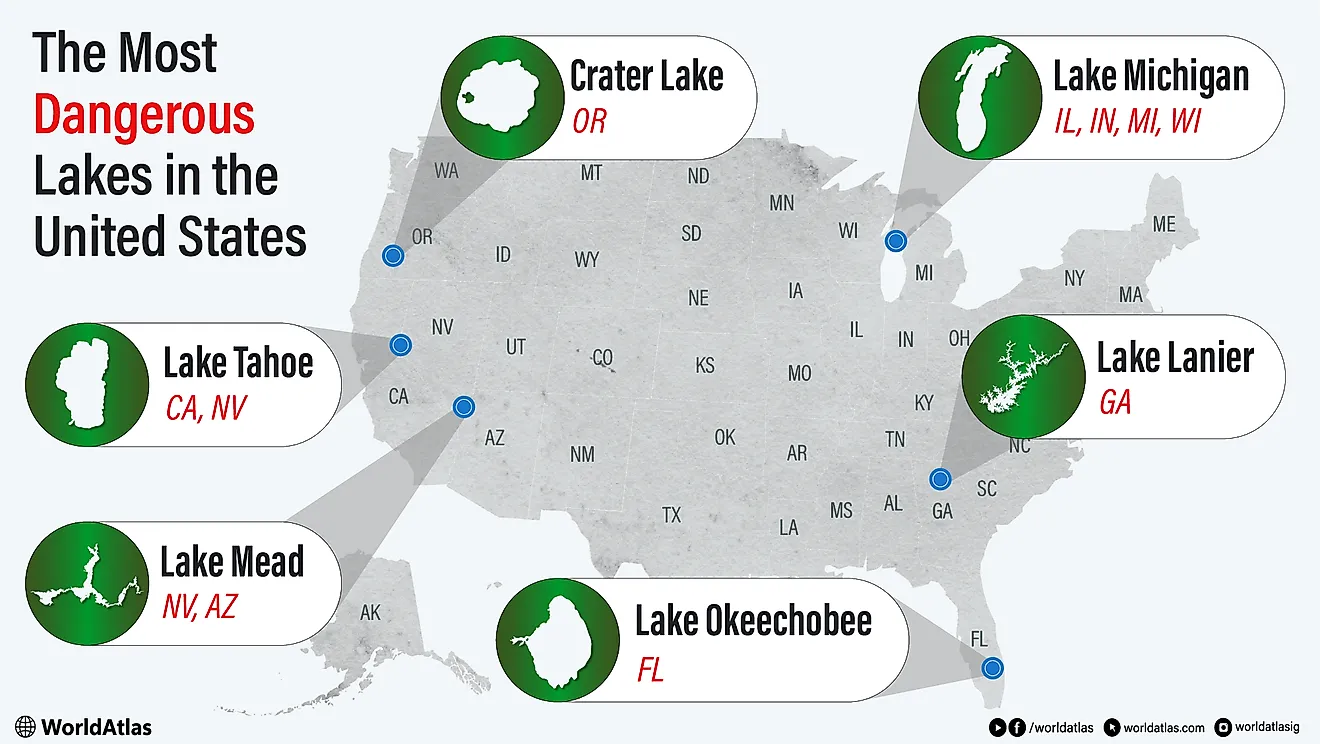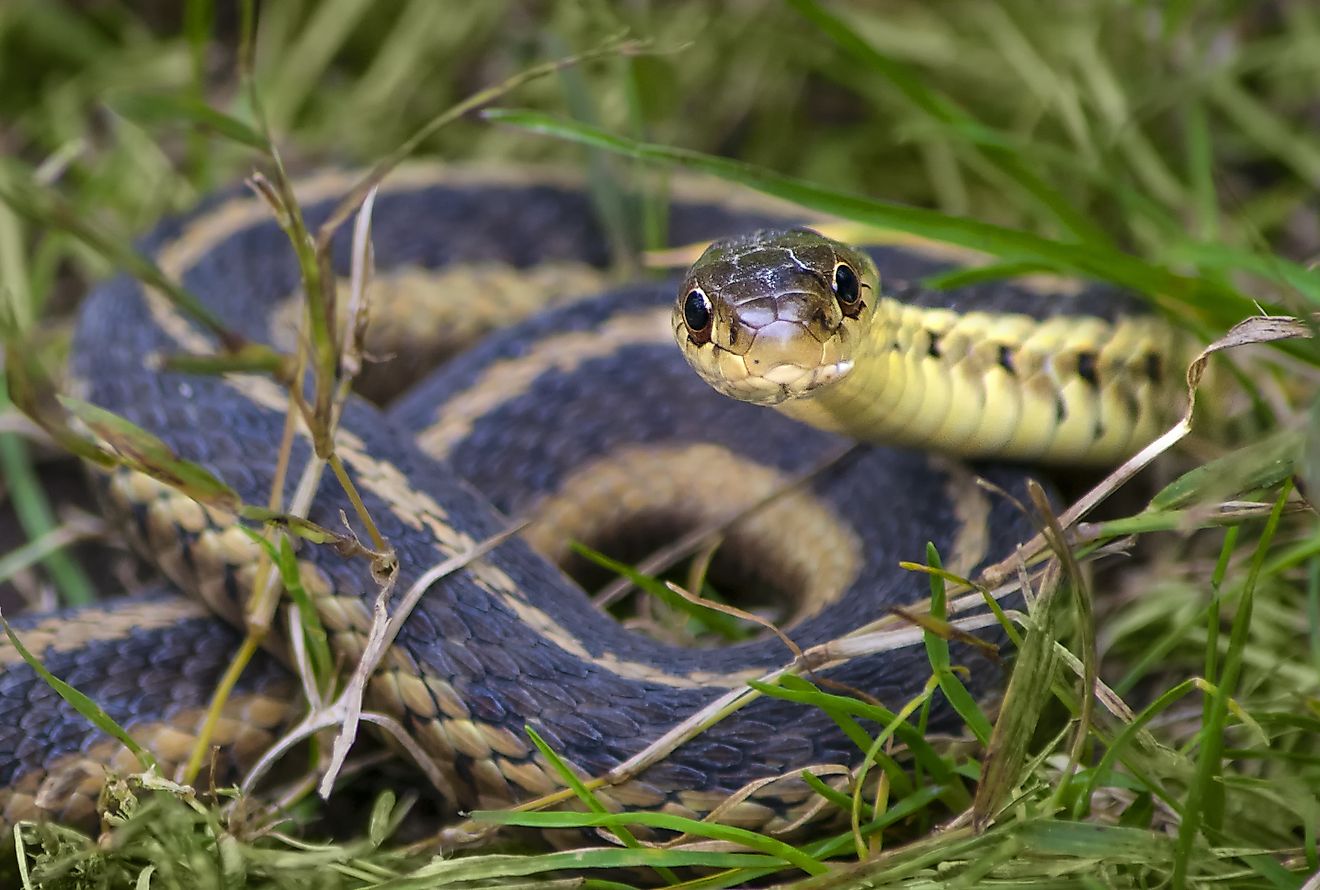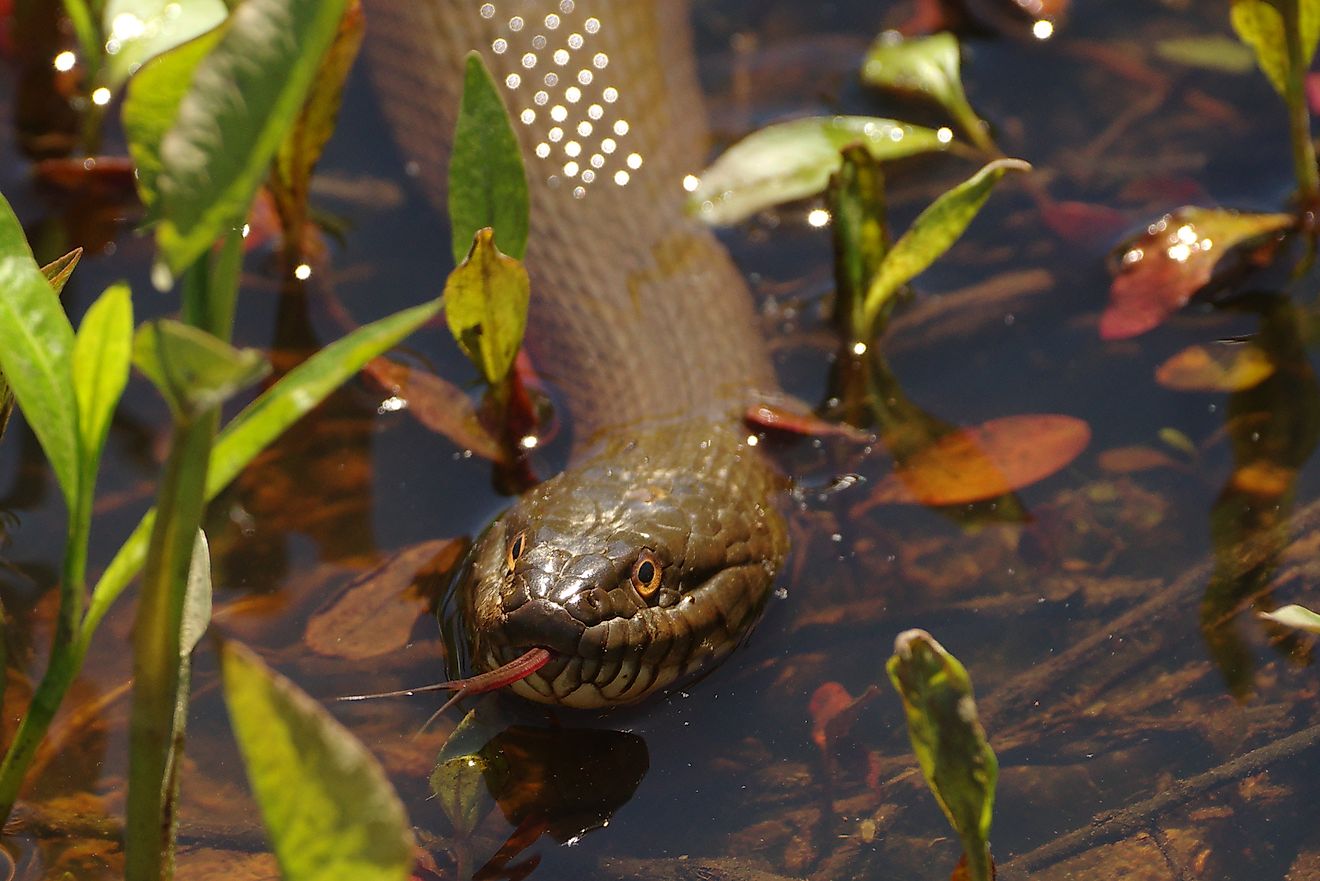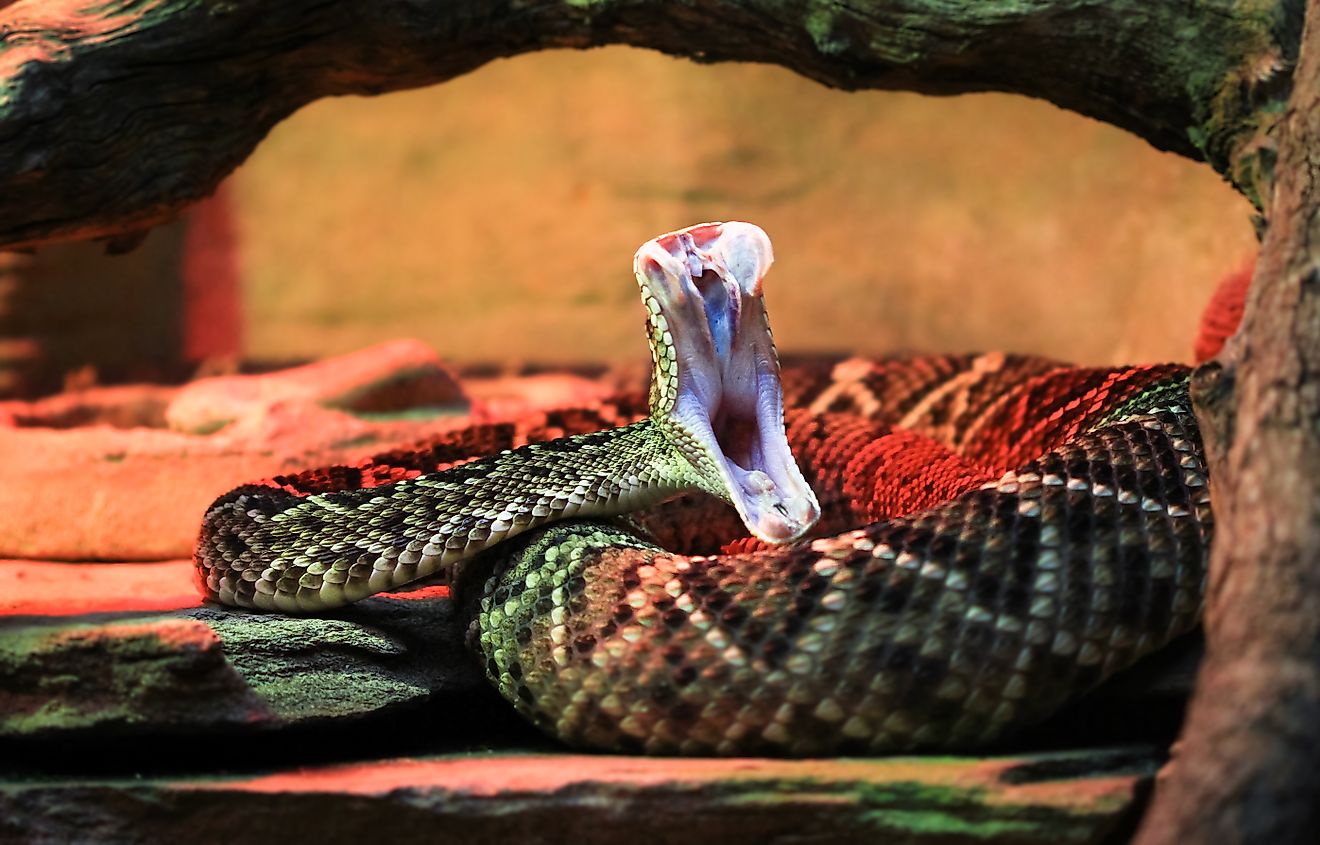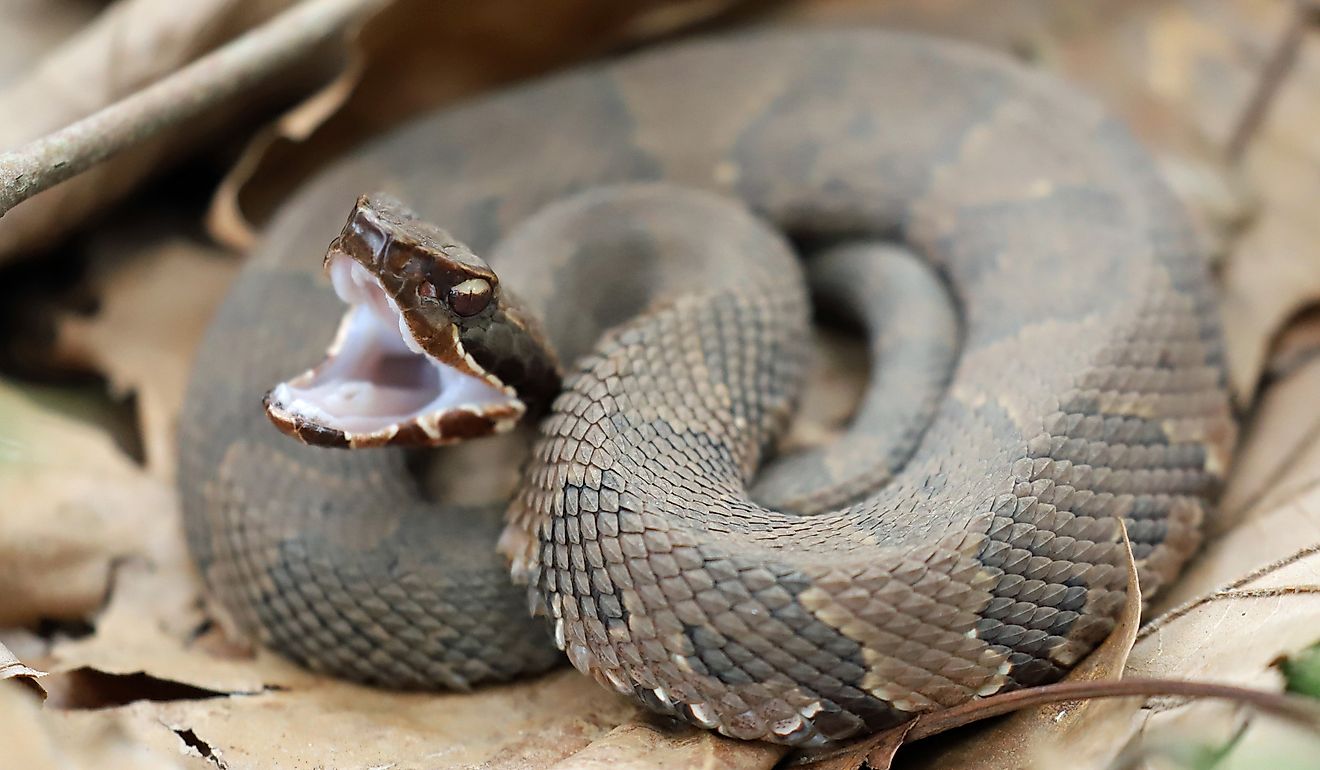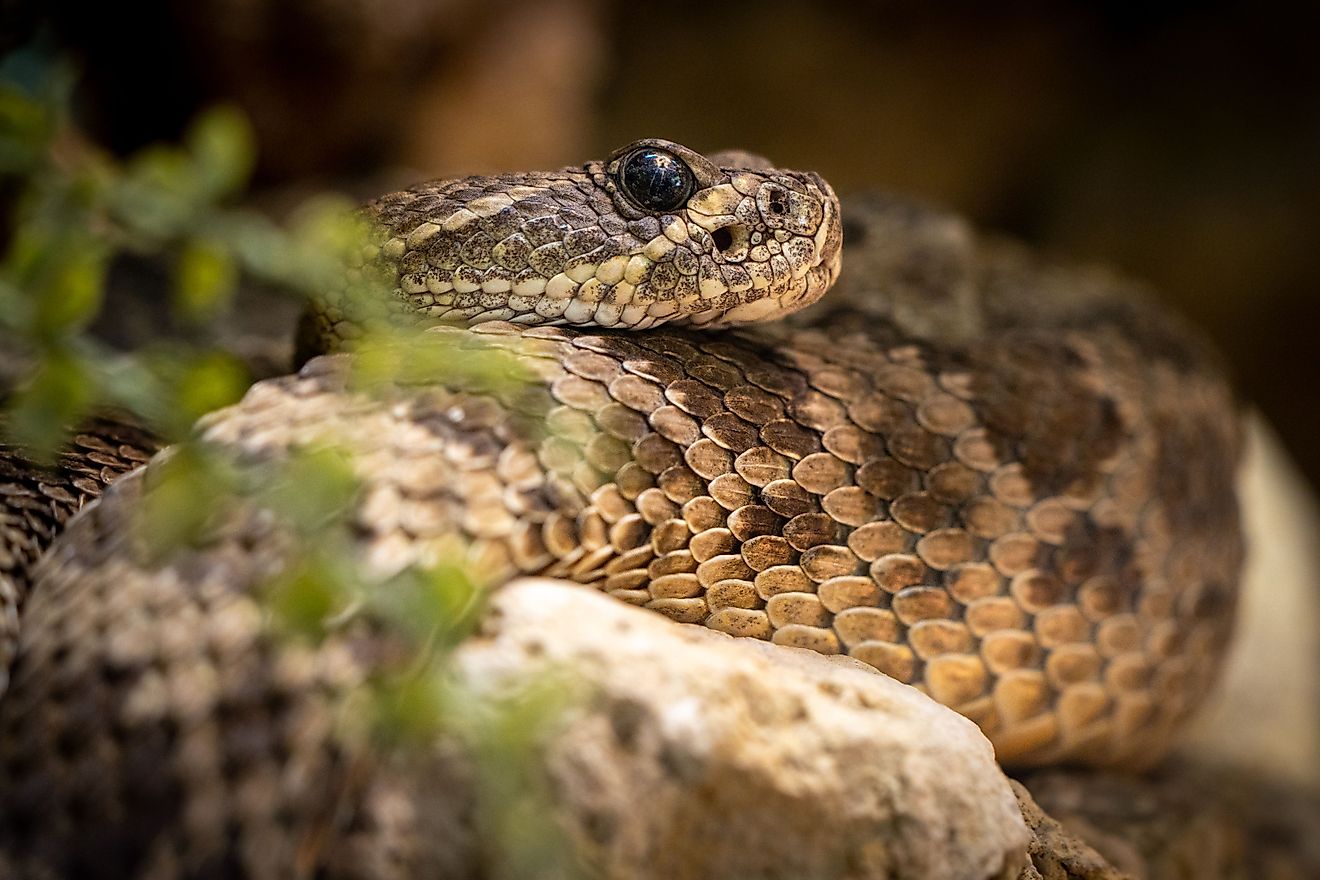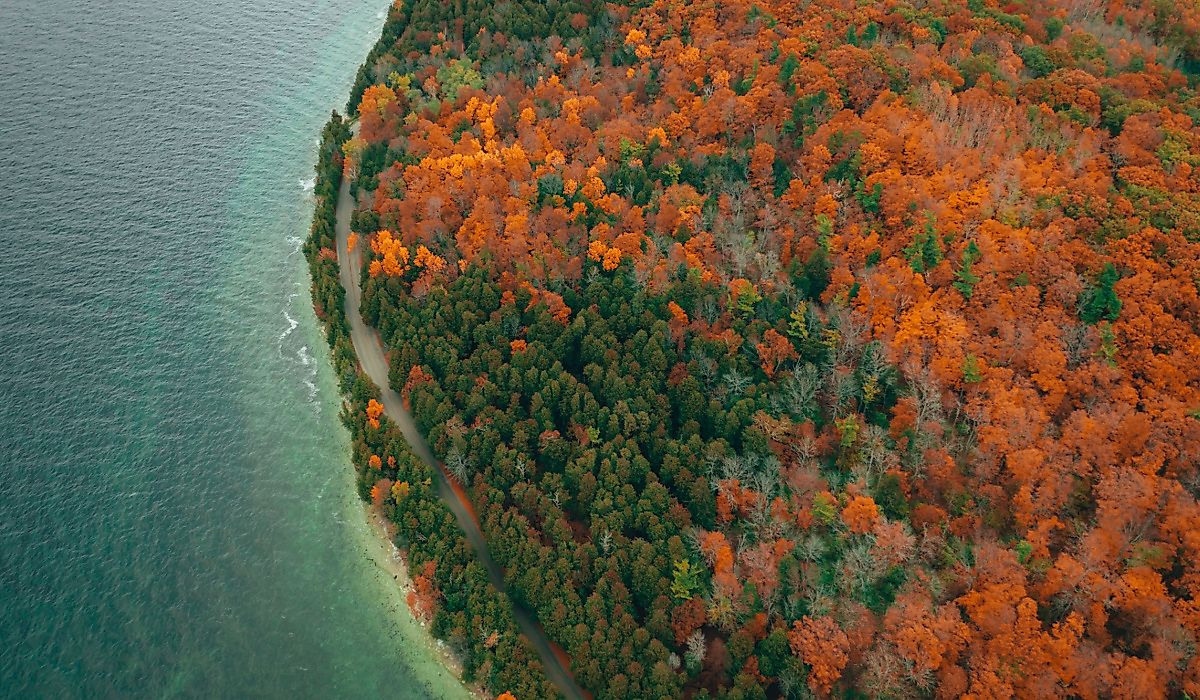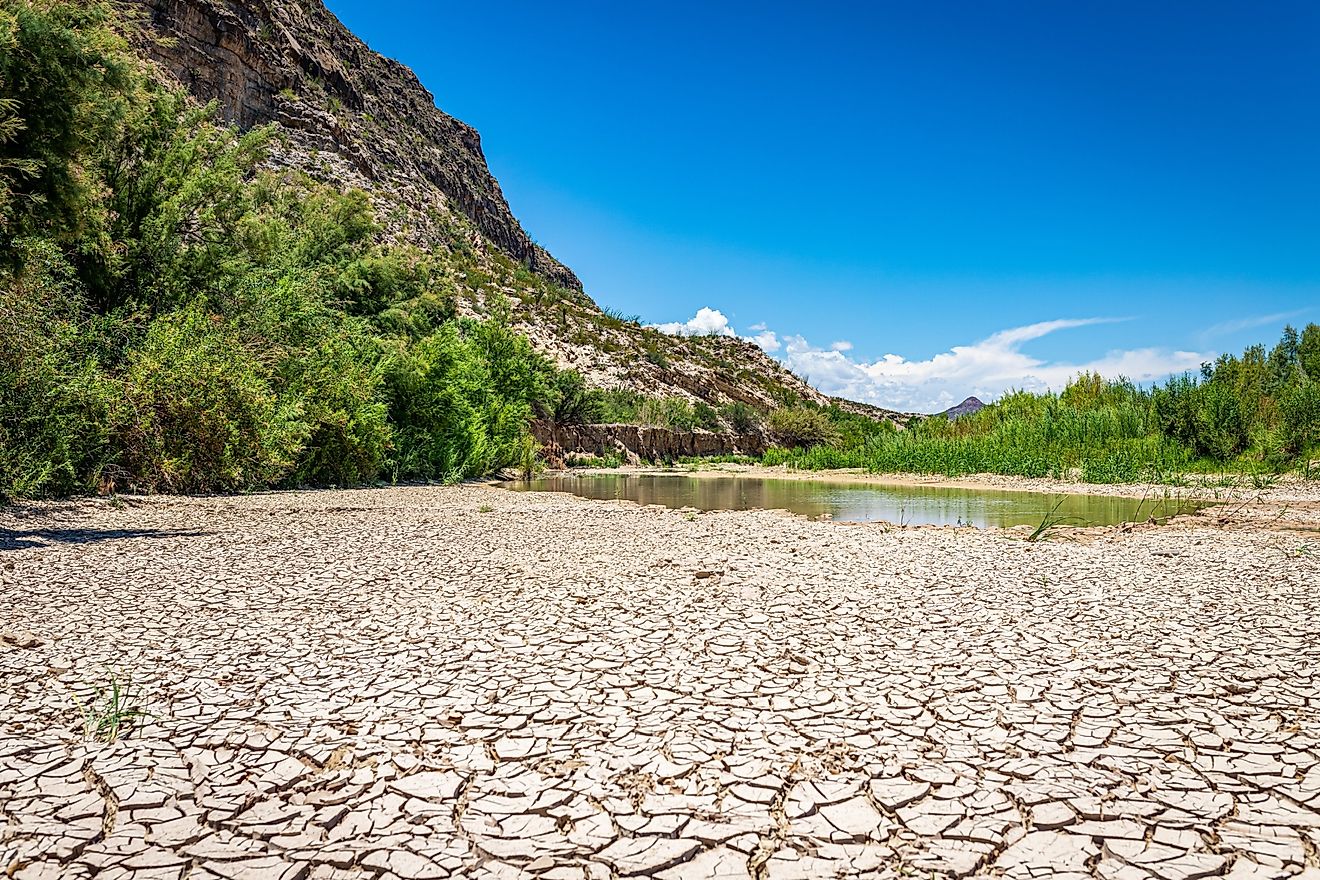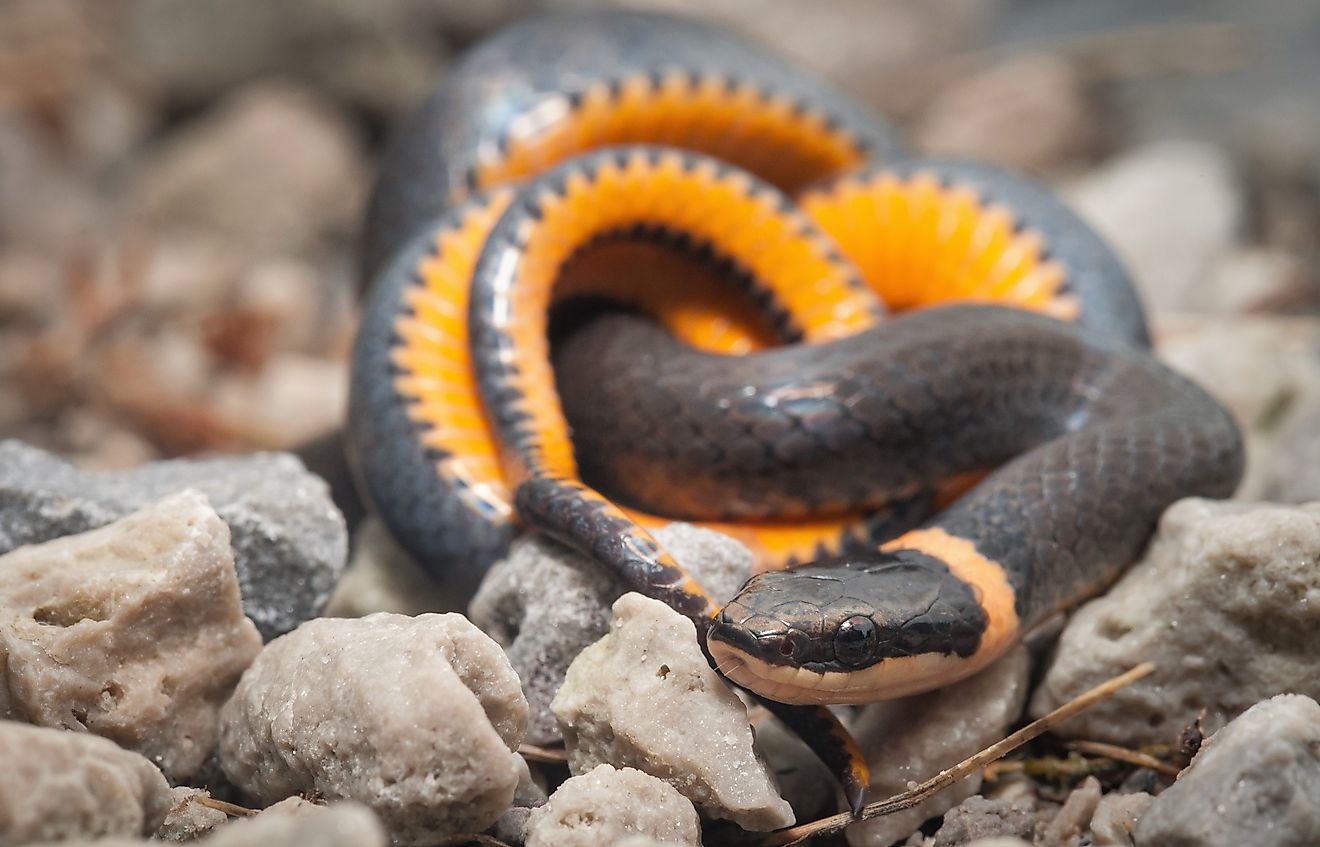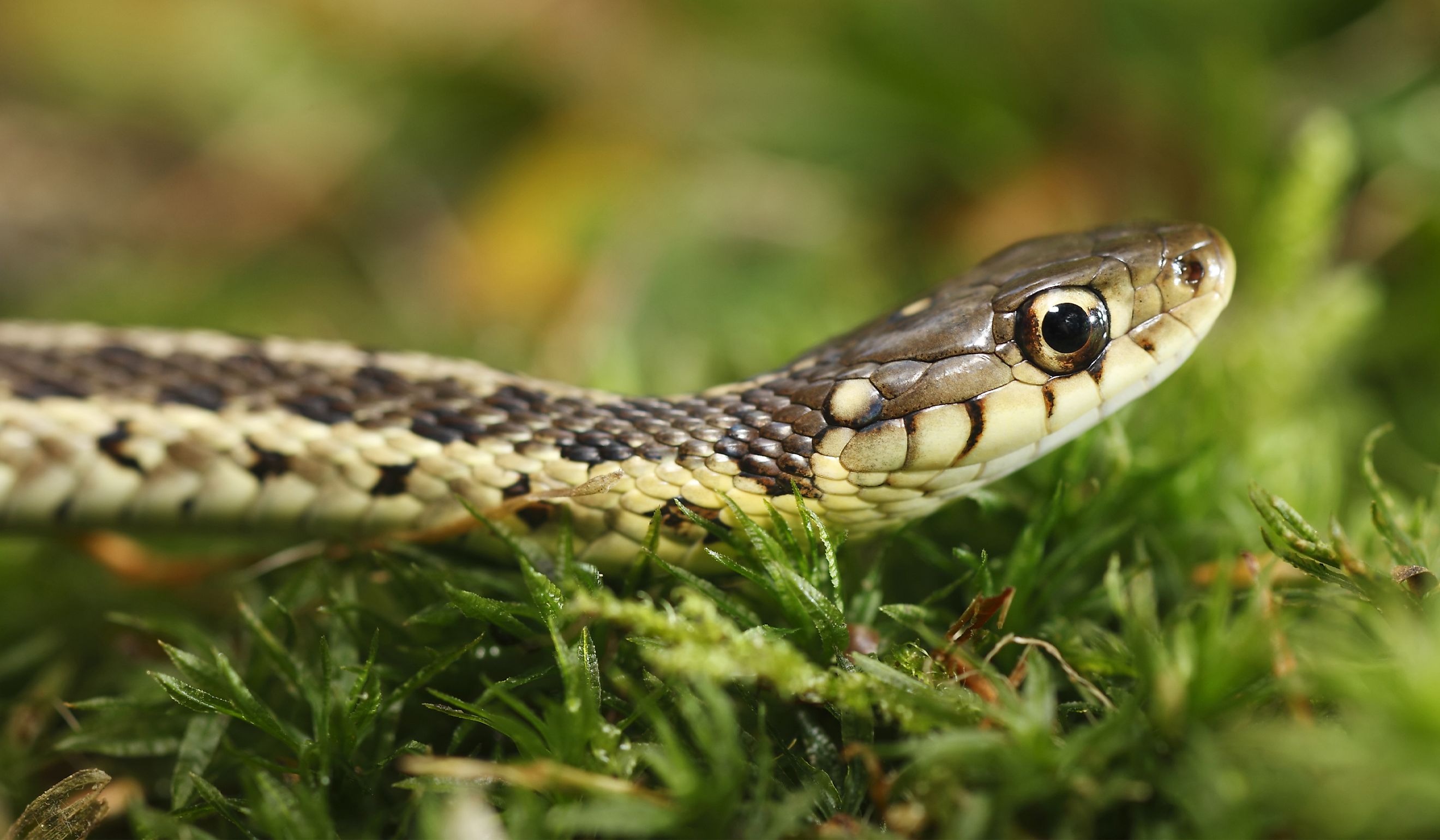
5 Most Snake-Filled Bodies Of Water In Maine
Packed with beautiful lakes, a rugged coastline, and winding rivers, Maine is the perfect destination if you enjoy water-based recreation. Whether you’re swimming, kayaking, paddling, or boating Maine’s picturesque waters, be aware that you’re not the only one taking a dip. Maine is home to nine snake species, many of which inhabit its aquatic ecosystems.
There are no venomous snakes in Maine. While Timber Rattlesnakes were historically present, there are currently no established native venomous snake populations in Maine. Today, Maine’s most common snakes include the Gartersnake, the Watersnake, the Red-Bellied Snake, and the Eastern Milksnake. Only one species is endangered in the state, the North American Racer.
Read on to discover which Maine bodies of water are popular with its serpent residents and what to do if you encounter one.
Moosehead Lake
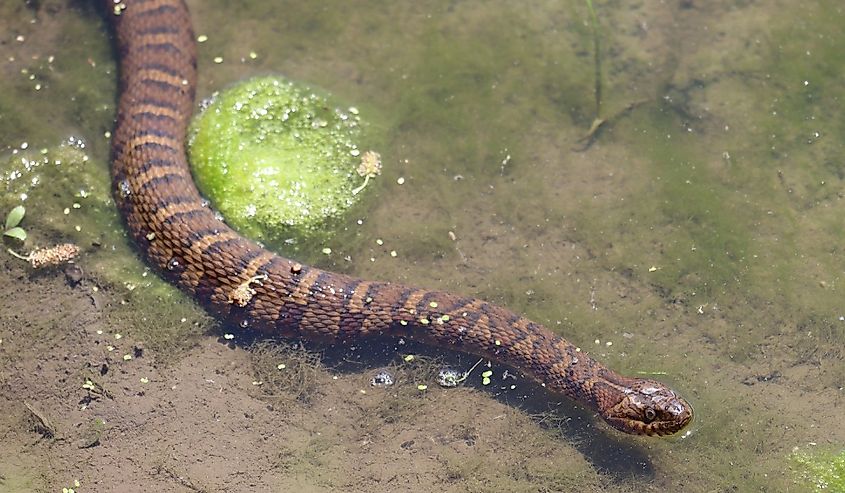
Moosehead Lake in northwest Maine is the largest in the state. At 40 miles long and covering nearly 75,000 acres, the pristine lake includes several key habitats along its forested shorelines.
You’re most likely to see a Common Watersnake at Moosehead Lake. As the name suggests, this is the most common aquatic snake in Maine. In the summer months, they can be spotted sunning themselves at the water’s edge. Watersnakes can grow up to 48 inches and have thick, dark bodies with red or black half-moon patterns on their belly. You may also spot Red-bellied Snakes and Ring-necked Snakes, both of which have been seen around the lake.
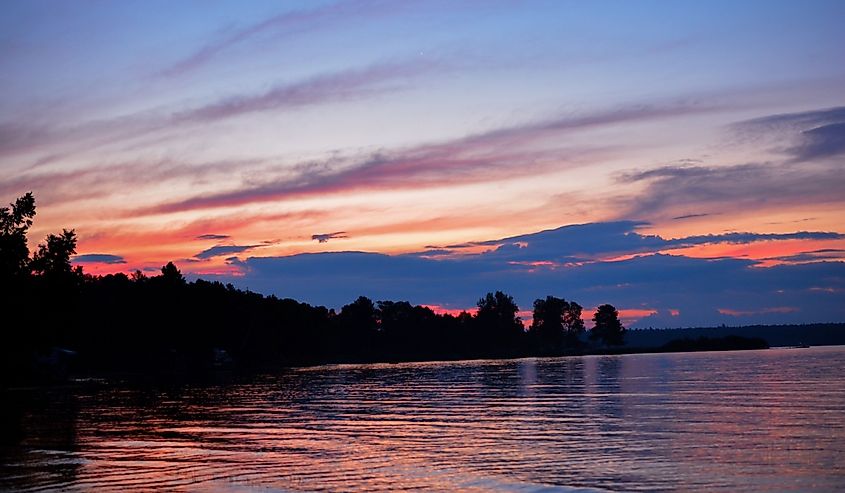
Popular with swimmers, boaters, kayakers, and anglers, Moosehead Lake is one of the busiest recreation areas in Maine. It’s not just a summer destination either; the lake is also a prime ice fishing location in the winter months. You’re very unlikely to see any of the lake’s snakes at that time, though. Snakes can’t generate their own heat, so they spend the winters dormant in warm burrows and dens underground.
St John River
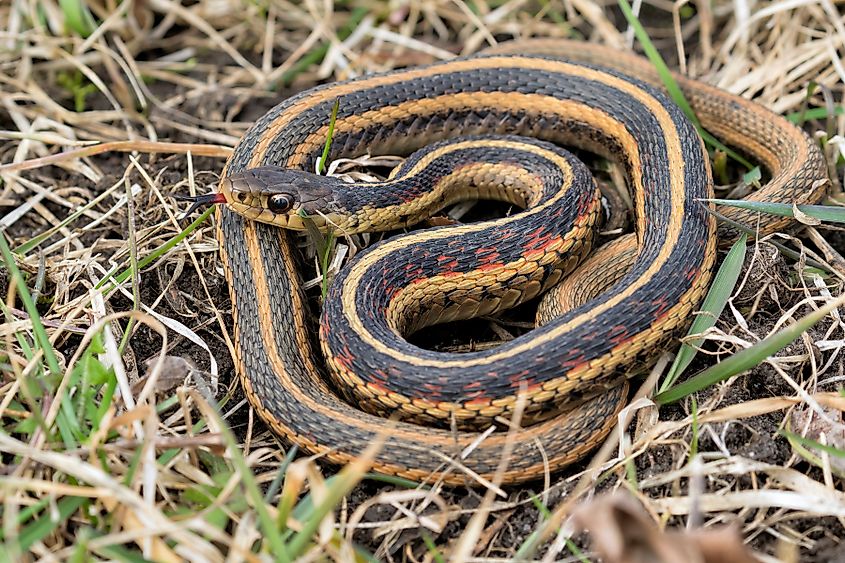
The 418-mile St. John River flows along the Maine-New Brunswick border. The river meanders through the St John River Forest in the north Maine woods, covering miles of untouched wilderness.
The river and its surrounding area is one of the most ecologically important regions in Maine. It’s home to several rare plant and animal species including the wood turtle, Canada Lynx, and the Furbish’s lousewort, a flower found nowhere else in the world.
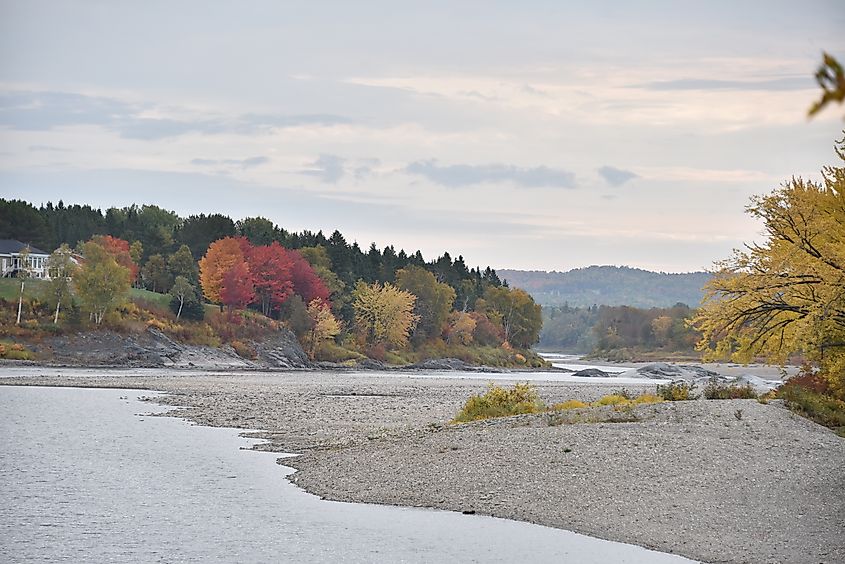
You might just see a Common Gartersnake in and around the St John River area. Populations of this medium-sized reptile are very stable and spread throughout the state, making it the most commonly encountered snake in Maine. The gartersnake lives in riverside meadows, marshes, bogs, and streams. It likes to hide under logs, rocks, and other natural debris so if you're visiting the river, take care and watch where you’re stepping or sitting.
Sebago Lake
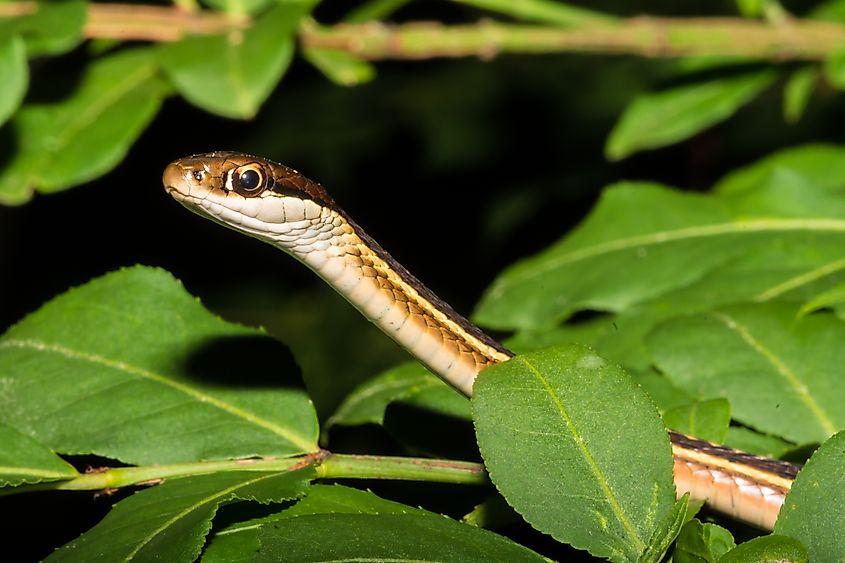
Covering 45 sq miles, Sebago Lake is the second largest lake in Maine and is the centerpiece of Sebago Lake State Park. The park is open year-round and offers camping, hiking, swimming, boating, fishing, and canoeing. With sandy beaches, ponds, bogs, forested inlets, and coves, the lake has a number of habitats that support snakes. It’s also rich in their preferred prey of small fish, amphibians, and small mammals.
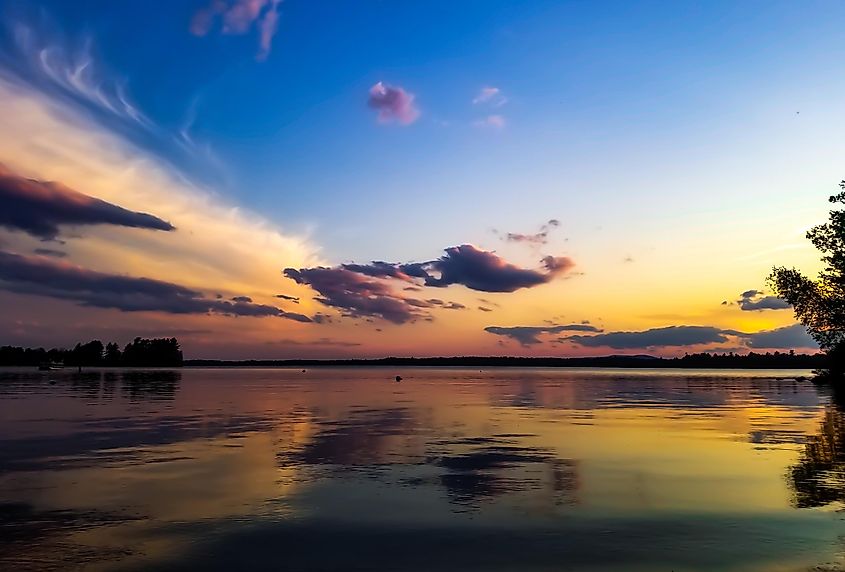
Along with gartersnakes and watersnakes, the more rare Eastern Ribbonsnake has been spotted around Sebago Lake. This distinctive-looking serpent is easy to identify thanks to its eye-catching yellow stripes that run vertically along its dark body. This species prefers wetlands with lots of shrubby vegetation that provides them with cover to shelter under.
Union River
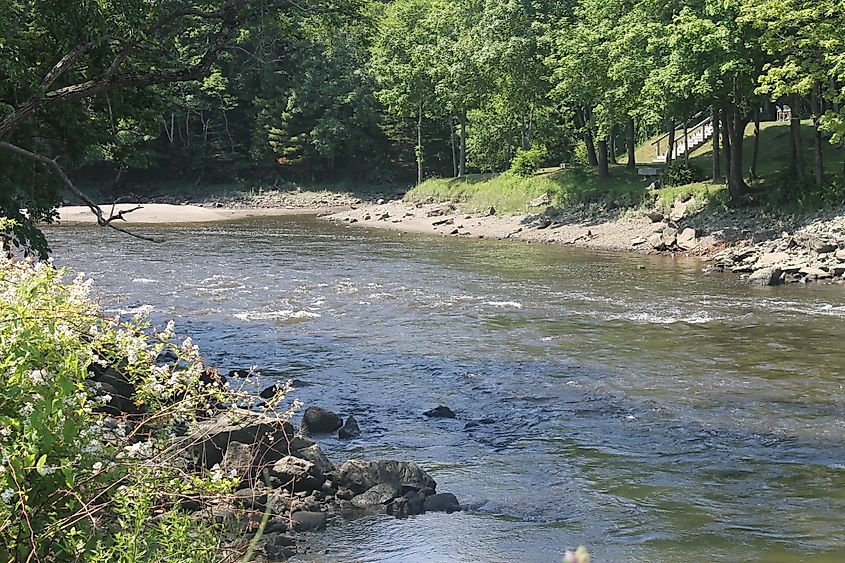
The Union River runs from Hancock County, through the town of Ellsworth, and out into Union River Bay where it meets the ocean. Along the way, the river passes many snake-friendly habitats including forests, wetlands, and marshy fields. The Upper Union River is home to the rare Eastern Ribbonsnake, a species of special concern in Maine. This semi-aquatic snake is likely found in wet meadows by the water, marshy streams, and ponds.
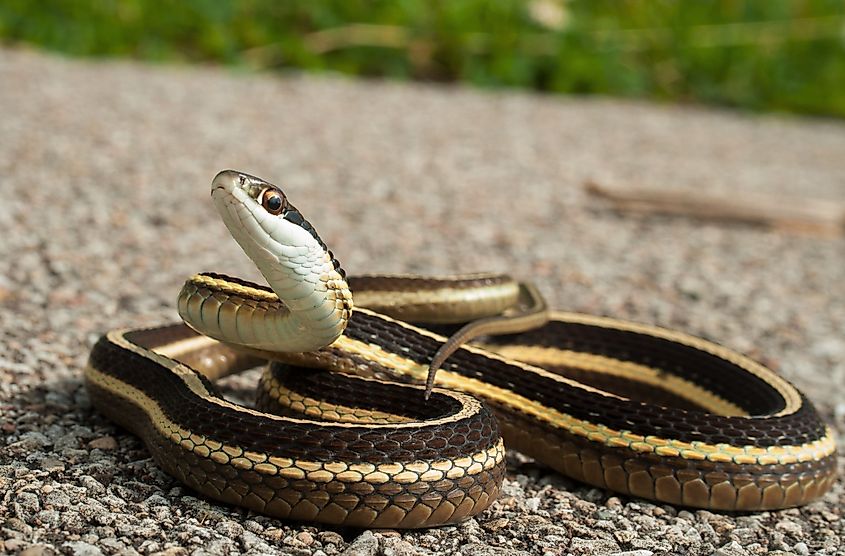
One of the best ways to enjoy the river and see its scenic viewpoints is taking the Union River Trail, an easy and accessible 0.3 mile roundtrip that starts and ends close to downtown Ellsworth. The trail features a scenic overlook, stone steps and a short cliffside walk.
Flagstaff Lake
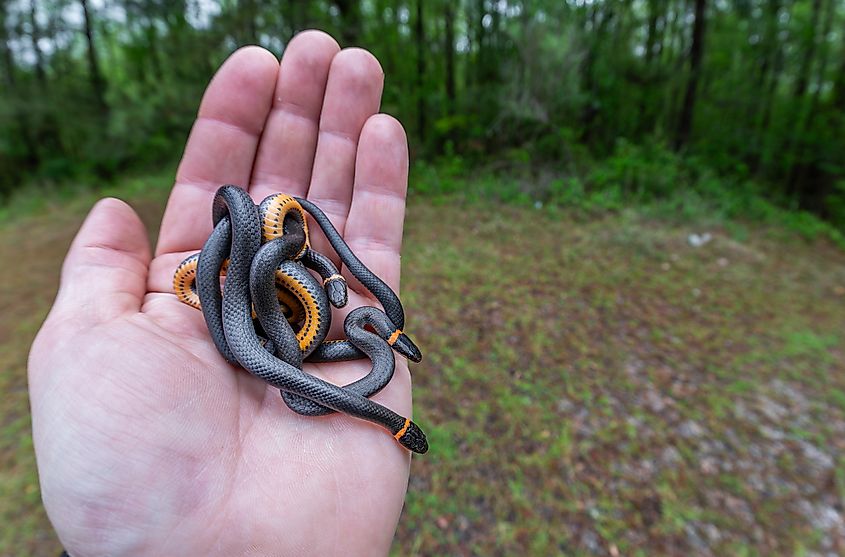
Flagstaff Lake in western Maine is a 20,300 acre lake that forms part of the historic Northern Forest Canoe Trail. Flagstaff Lake and nearby Bigelow Preserve are a popular recreation area where visitors can hike, fish, snowshoe, and cross-country ski.
The lake was formed when the Dead River was dammed in 1950 and is relatively shallow. Its largely undeveloped shoreline is perfect for snakes who prefer to avoid human activity. Snake-friendly habitats in this area include high elevation ponds, fens, and forests. In addition, many of the wetlands around the lake have been designated as Significant Wildlife Habitats.
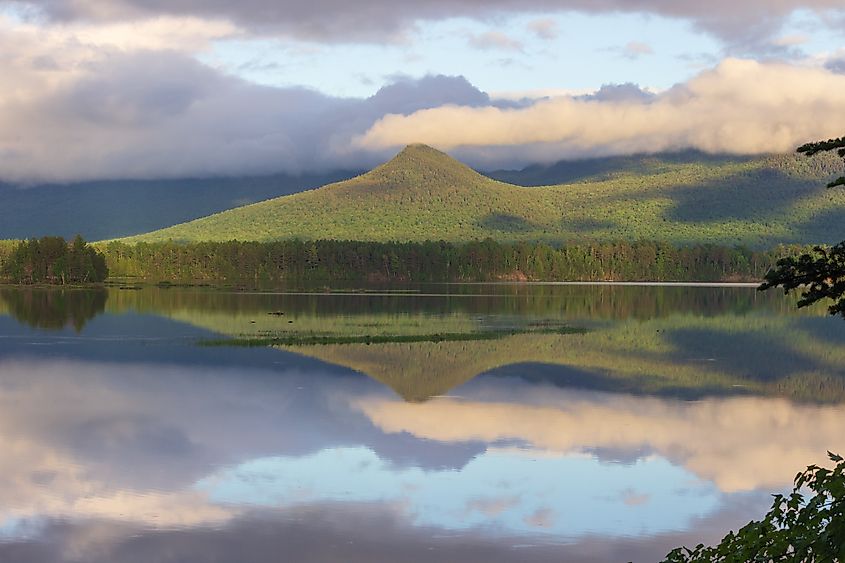
Snake species you may meet at Flagstaff Lake include watersnakes, garter snakes, and ring-necked snakes. The latter are easy to spot thanks to the striking yellow or orange band around their neck. Other wildlife to watch for include Bald Eagles, Peregrine Falcons, and the Northern Bog Lemming, one of the rarest mammals in Maine.
Maine’s Snakes
Scenic, healthy, vibrant, and beautiful, Maine’s waterside environments are a great place to relax and unwind. Don’t let snakes keep you out of the water this summer. Maine’s snakes are harmless, so there’s no need to worry if you encounter one.
Interactions are unlikely as snakes are shy by nature and prefer to avoid humans, but they do happen. If you see a snake while visiting Maine’s beautiful bodies of water, keep your distance and enjoy the chance to see the state’s wildlife up close. Don’t interfere with or disturb the snake; they are a vital part of keeping lake and riverside environments healthy.
